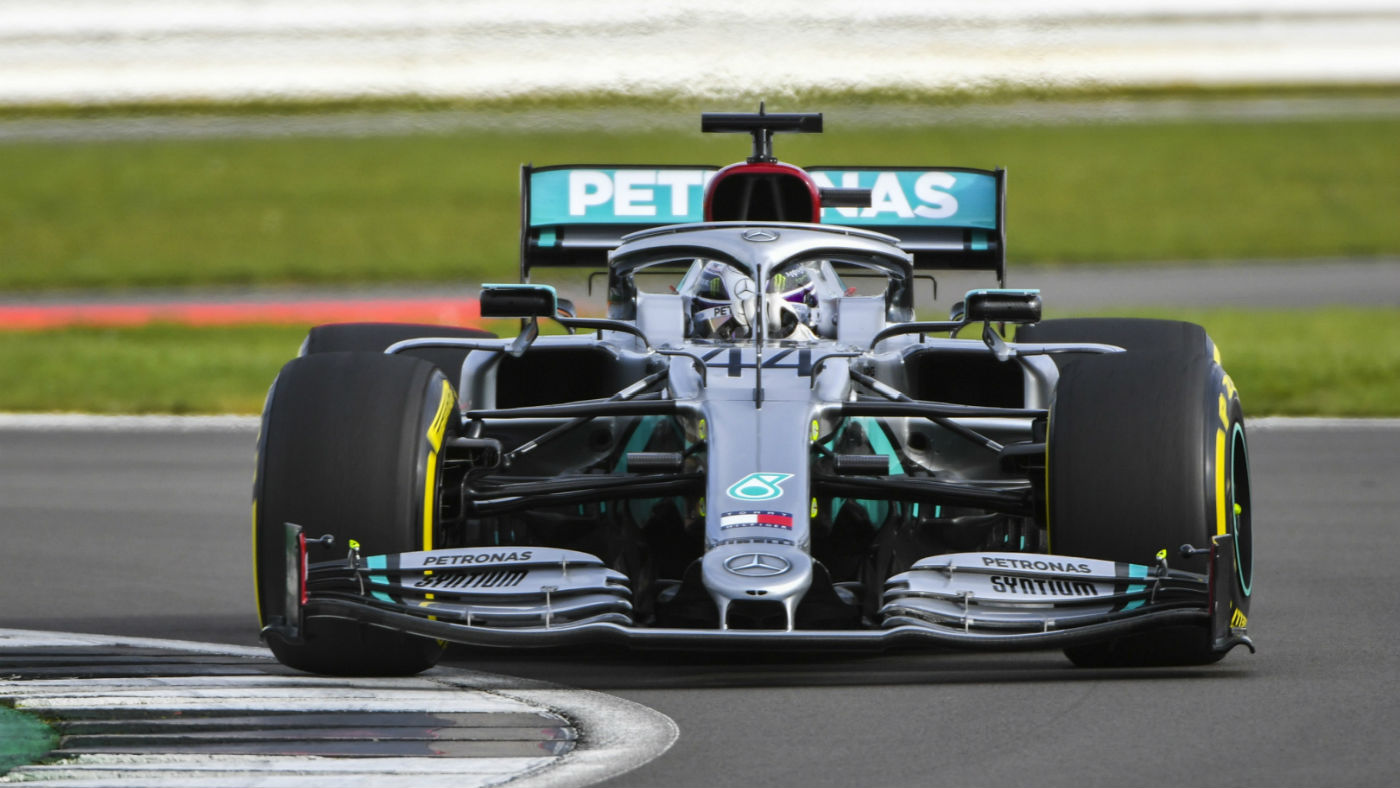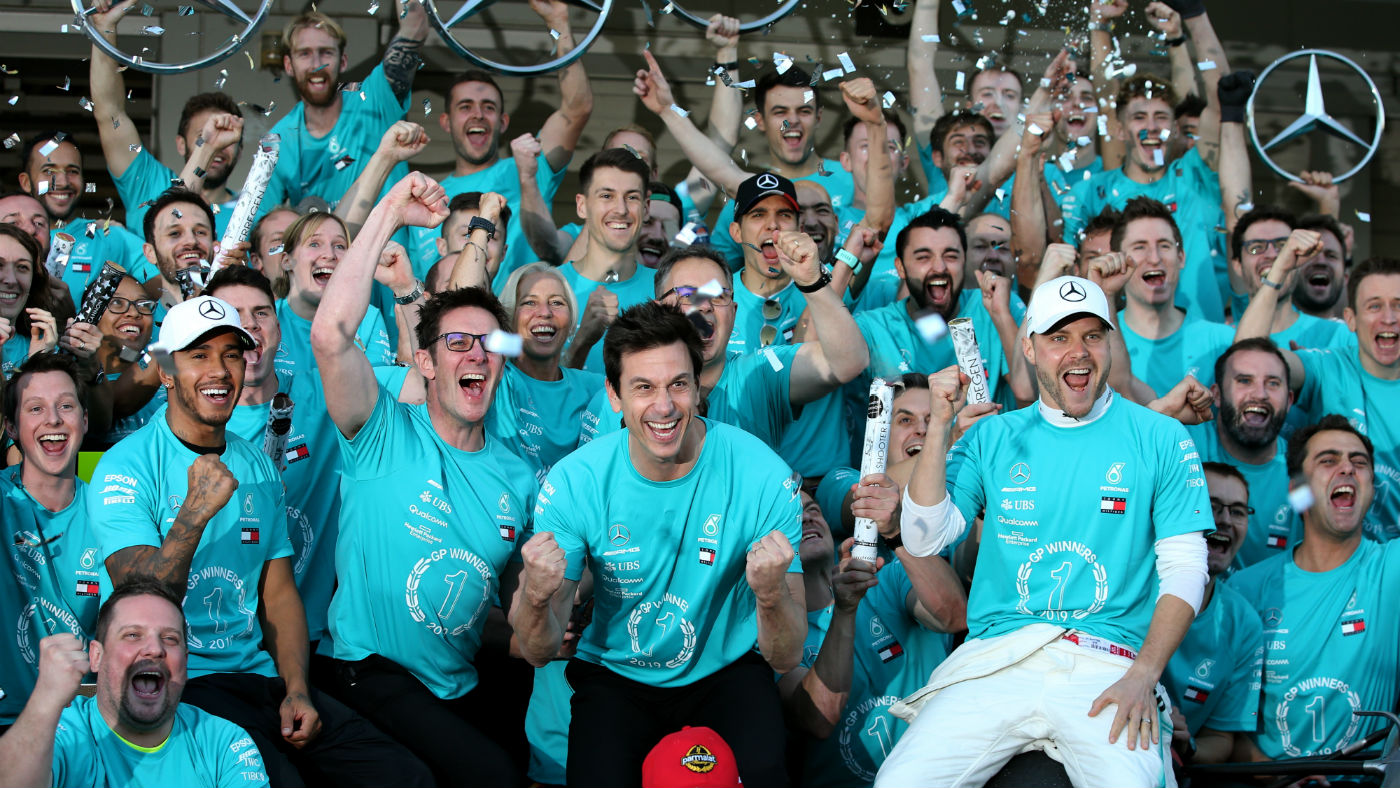F1 qualifying: Teams win power struggle with Ecclestone and Todt
Changes abandoned 'in the interests of the championship' as elimination system falls flat

F1 is to return to the 2015 qualifying format after the sports bosses lost what has been described as a "power struggle" with the teams over a new elimination-style system.
The new system was adopted just days before the start of the new season last month, but failed to deliver the extra excitement it promised. The prospect of seeing a car eliminated every 90 seconds was supposed to add to the drama but had the opposite effect, with most teams setting a time early in the session and returning to their garages, leaving the track silent.
Now Jean Todt, the president of the sport's governing body, the FIA, and F1 commercial boss Bernie Ecclestone have agreed to abandon the system "in the interests of the championship".
The Week
Escape your echo chamber. Get the facts behind the news, plus analysis from multiple perspectives.

Sign up for The Week's Free Newsletters
From our morning news briefing to a weekly Good News Newsletter, get the best of The Week delivered directly to your inbox.
From our morning news briefing to a weekly Good News Newsletter, get the best of The Week delivered directly to your inbox.
The pair had proposed an alternative "aggregate" qualifying system, with the combined time from two laps determining a driver's place on the grid, but that was met with serious opposition from the teams.
Ecclestone and Todt have "lost a power struggle" after "weeks of farcical wrangling", says Daniel Johnson in the Daily Telegraph.
"It took an extraordinary display of unity – and power – from the 11 teams to force F1's two biggest beasts to row back in the face of a major revolt... The debate over qualifying had taken on enormous significance since Melbourne and become a key battleground for control in the sport."
The whole episode has been an "embarrassing fiasco", says Andrew Benson of the BBC. The teams only accepted the elimination system because they did not believe it was worth over. But the way it panned out made action necessary.
A free daily email with the biggest news stories of the day – and the best features from TheWeek.com
"The row over qualifying – knockout, aggregate, whatever it was going to be – turned into F1's Alamo, the last stand by the teams against the forces of Bernie Ecclestone and Jean Todt," says Kevin Eason of The Times.
Ecclestone was fed up with seeing two Mercedes on the front of the grid every week, but he was also flexing his muscles when he imposed the changes. "This was merely a power play... to let the teams know who is bossing this sport. And it didn't work.
"The qualifying row is over – for now – and we move on to the next furore," continues Eason. "There will be one, rest assured, because of the dysfunctional nature of the way the sport is run. No one believes it works, no one wants it but no one can change it until 2020 when the commercial deals that bind the teams, FIA and Ecclestone expire. That day cannot come soon enough."
F1 in a mess as qualifying squabble frustrates fans
04 April
The Formula 1 circus landed itself in a fresh spot of bother over the weekend thanks to reignited squabbles between the teams, the FIA governing body and Bernie Ecclestone over what qualifying system the sport should use.
In a bid to get cars on track frequently, a new style of elimination has been introduced this season which sees drivers being knocked out one by one every 90 seconds over three separate sessions.
However, the move has backfired, leading to sessions being action-heavy at first and then almost always dead with minutes to go. Finding themselves struggling to do both an outlap and a qualifying effort, teams are instead opting to do a fast lap at the beginning of the session and then sit in the garage.
Reaction to the new system was overwhelmingly negative at the season opening Australian Grand Prix, with Red Bull team boss Christian Horner saying the sport should apologise to fans and move on. The system went unchanged for the Bahrain Grand Prix, with similar sentiment expressed.
What's going on with F1 qualifying?
The 2016 system
The first qualifying session takes 16 minutes. After the first seven minutes have elapsed, the slowest driver is eliminated. After this, the next slowest driver is eliminated every 90 seconds until the chequered flag, knocking out seven drivers and allowing 15 to advance.
The second session is 15 minutes, with the slowest driver dropping out after 6 minutes and then the same, 90-second "musical chairs" system kicking in, leaving eight drivers to battle out a 14 minute third heat, with the slowest driver kicked out after five minutes have passed. This counts down right to the end, when just two drivers remain to fight it out for pole – or at least it should.
How the unpopular format managed to sneak onto the bill for the Bahrain outing – and could even still be with us in China in two weeks' time – is typical of the sport's organisation, claims Daniel Johnson in the Daily Telegraph. "F1's broken rule-making structure has made it so far impossible to abandon," he says.
The one the teams want
Teams and many fans wish for the rules to revert to the qualifying system used 2006-2015 in various guises. Three sessions, one flag at the end of each and tough luck if you're in the knockout zone, while the 2015 format allowed ten drivers 12 minutes to go for pole at the end of it. A simple, and easy to understand format which has been used without problem for almost a decade.
The key difference here is all about what happens after the flag drops. Currently, if they are bottom of the pile and the timer runs out, drivers are knocked out regardless of whether they are on a fast lap. With the old system, drivers could always start hot laps right at the end of the session, safe in the knowledge that the chequered flag only matters when they round the final corner and pass it, allowing qualifying to crescendo into a flurry of activity when it really mattered.
The alternative Bernie Ecclestone and the FIA have come up with
Following calls for the 2015 format to be reintroduced, Ecclestone and the FIA have offered teams a choice between the 2016 rules and something completely different, resulting in unanimous agreement to change the rules being met so far.
An "aggregate qualifying" has been offered up as an alternative, using the same simple knockout format as in 2015 rules but with drivers setting two hot laps rather than one and adding both times together.
What do people think?
According to Motorsport.com, the alternative system could clearly have an impact on tyre usage if teams are forced to do a minimum two quick laps per session.
Horner has said the rules are a close compromise to the 2015 regulations he and other team bosses desire, but his former world champion, Sebastian Vettel, now at Ferrari, labelled the idea as "s***".
William Esler of Sky Sports says that top team bosses such as McLaren's Eric Boullier and Mercedes' Toto Wolff are united against both of the new 2016 proposals. "It seems that it has increased to a level where it is 90 per cent politics and off-track discussions, qualifying formats and terrible ideas," says Wolff.
Elsewhere, Kevin Easton writing for the Times says: "The whiff of desperation is polluting Formula One’s paddock."
The circus is well and truly back in town.
-
 Why is Trump’s alleged strike on Venezuela shrouded in so much secrecy?
Why is Trump’s alleged strike on Venezuela shrouded in so much secrecy?TODAY'S BIG QUESTION Trump’s comments have raised more questions than answers about what his administration is doing in the Southern Hemisphere
-
 Vance’s ‘next move will reveal whether the conservative movement can move past Trump’
Vance’s ‘next move will reveal whether the conservative movement can move past Trump’Instant Opinion Opinion, comment and editorials of the day
-
 Why recognizing Somaliland is so risky for Israel
Why recognizing Somaliland is so risky for IsraelTHE EXPLAINER By wading into one of North Africa’s most fraught political schisms, the Netanyahu government risks further international isolation
-
 Coronavirus: F1 champions Mercedes help create breathing aid
Coronavirus: F1 champions Mercedes help create breathing aidSpeed Read Silver Arrows worked with University College London engineers to produce a device in less than a week
-
 F1: Lewis Hamilton and Valtteri Bottas shake down the Mercedes W11 - pictures and video
F1: Lewis Hamilton and Valtteri Bottas shake down the Mercedes W11 - pictures and videoIn Depth The Silver Arrows’s new machine hits the track at Silverstone
-
 F1: Mercedes W11 livery is unveiled - video, pictures and fan reactions on Twitter
F1: Mercedes W11 livery is unveiled - video, pictures and fan reactions on TwitterIn Depth Champions’s W11 car will have a shakedown at Silverstone on Friday
-
 F1: Lewis Hamilton and Mercedes dedicate record title double to Niki Lauda
F1: Lewis Hamilton and Mercedes dedicate record title double to Niki LaudaSpeed Read Valtteri Bottas’s victory in Japan seals the championships for the Silver Arrows
-
 F1: Valtteri Bottas keeps Mercedes seat for 2020
F1: Valtteri Bottas keeps Mercedes seat for 2020Speed Read Silver Arrows confirm the Finn will continue to be Lewis Hamilton’s team-mate
-
 F1: Hamilton, Bottas and Mercedes ‘not to blame’ for lack of competition, says Brawn
F1: Hamilton, Bottas and Mercedes ‘not to blame’ for lack of competition, says BrawnSpeed Read Lowe leaves Williams and Red Bull’s Marko denies Gasly-Kvyat rumours
-
 F1: Lewis Hamilton’s ‘quite average’ start - 137 points and four wins from six races
F1: Lewis Hamilton’s ‘quite average’ start - 137 points and four wins from six racesSpeed Read Mercedes and Ferrari set to feature in Netflix series and Red Bull boss Horner compares 2021 talks to Brexit
-
 F1 and the future: ‘Max factor’, race calendar, Netflix and a return to Africa
F1 and the future: ‘Max factor’, race calendar, Netflix and a return to AfricaIn Depth Commercial chief Sean Bratches speaks about the vision of Formula 1 and its owners Liberty Media